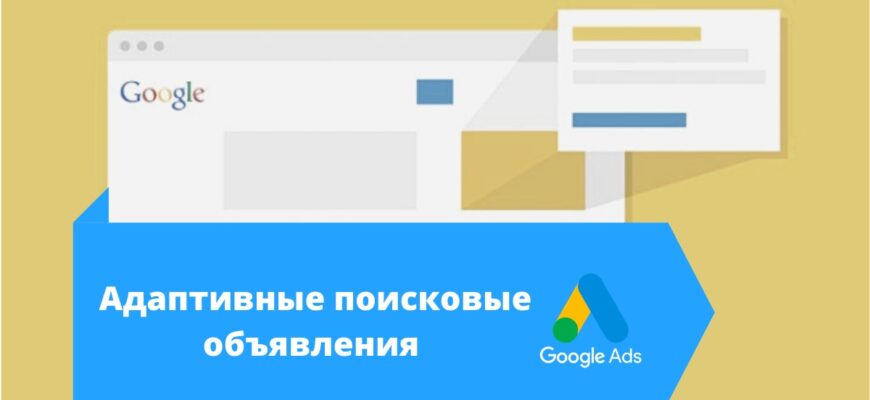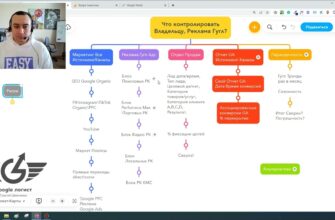Adaptive search ads is a new flexible tool for Google contextual advertising, which allows instead of one text and header use up to 4 description templates and up to 15 different headers. The number of possible combinations exceeds 43 thousand. That is, the possibilities for experimentation are almost limitless.
As soon as the user finishes setting up the campaign, the system starts testing all combinations of parameters and identifies those that show the best performance. Having accumulated the necessary statistics, Google selects the most appropriate ad, taking into account the visitor’s request, the chronology of his search, the type of equipment, etc.
How do responsive search ads work in Google Ads?
It is necessary to formulate the main components of advertising: up to 15 headings and up to 4 texts. The more components will be set, the more combinations the system will make. It should be borne in mind that each text should look harmonious with any heading.
How many calls and sales will I get by ordering contextual advertising from you?
I need to calculate the conversion of my website Describe
the task
in the application
Calculate potential ad revenue Google
contextual advertising calculator

The system, which is based on a self-learning algorithm, selects the most productive combinations, testing them one by one.
Based on the characteristics of each user, the most appropriate adaptive Google search ad is selected. The learning algorithm shows exactly the text that best fits the keyword.
How many calls and sales will I get by ordering contextual advertising from you?
I need to calculate the conversion of my website Describe
the task
in the application
Calculate potential ad revenue Google
contextual advertising calculator
The Benefits of Responsive Ads in Google AdWords
- Reduce time. Thousands of ads are generated automatically based on just a few texts and headings specified by the advertiser;
- More likely to show. The sheer number of possible combinations results in ads being bid more frequently and showing up for more keywords;
- Ease of testing. Many combinations of ads and statistics on their effectiveness make it possible to quickly determine the best options in order to subsequently apply them in third-party advertising campaigns;
- Automatic optimization. Self-learning mechanisms and statistics collection allow the system to identify the most productive combinations;
- Audience reach. The sizes of Google AdWords adaptive search ads are automatically adjusted by the system, taking into account the allocated space for placing an ad unit. This makes it possible to expand the audience by displaying ads on more resources.
Responsive ads are larger than expanded text ads

Responsive Google Ads can have three titles of thirty characters each, two text descriptions of up to 90 characters, and two URL fields of 15 characters each.
Note! The extra 10 characters and one more description that isn’t in the expanded standard text ads gives you a lot of room to get creative.
With all these additions, Responsive Format becomes the most visible ad unit ever on a SERP page. The total length of the text can be twice the size of a standard contextual advertising and up to 300 characters.
Responsive search ad footprint is also increased by the ability to show extensions.
Google Responsive Search Ads Tips
- Create at least 8-10 heading statements. At the same time, it is important that they differ in shape. For example, you can use long or short titles, interrogative or action-driven. It is good to mention a unique offer or location information in the title as an option;
- Use headings of various lengths. There is a limit on the number of characters – no more than 30, but you should not try to use all possible characters as much as possible. One of the goals of a machine learning model is to compare the performance of both longer and shorter formulations;
- Include a couple of standard text ads in each group that contains responsive ads. This will allow you to reach a large audience;
- Remember that you can always fix a specific title or description text on a specific position. Such a need arises, for example, in relation to the brand name or legal information;
- Only with correctly set conversion monitoring settings in your personal account, the system can work correctly to determine which ad – adaptive or text – is more effective in each individual case;
- If you do not fix the position of title and description versions when setting up Google responsive ads, the system will be able to better select the most productive ad option for a specific auction and user;
- Don’t forget extensions. This ad format is compatible with any existing Google Ads extensions;
- One responsive ad is enough to test in a group. Shouldn’t add more;
- The key query must appear in at least two headings. It is also useful to enable dynamic insertion of keywords;
- At least 3 headings must not contain a keyword. This will save ads from unnecessary repetition and allow you to focus the user’s attention on other useful information (call to action, promotions, discounts, etc.);
- You can increase your ad’s chances of including 3 headings and 2 descriptions by creating these elements of different lengths during setup;
- A good responsive ad should have plenty of unique text to match. It is better not to use the same wording that encourages action.
Advice! Do not forget that the system learns on its own and shows those ads that are most likely to lead to a transition to the site. But it takes time to learn (at least a couple of weeks), so don’t jump to conclusions.
What information should I write in the text of a responsive ad?
- Indicate multiple offers (goods or services) to give the potential customer a choice;
- Write the price, tell about promotions and discounts;
- Give arguments in favor of the fact that the company is trustworthy, indicating information about successful experience, awards, diplomas and certificates;
- Demonstrate your concern for the consumer – inform about the guarantee, terms of delivery and payment;
- Make it clear what your goal is with slogans and calls to action.
Summary
The tool is an indisputable assistant for the advertiser. It allows you to save time for analytics and work on improving the effectiveness of campaigns.
Manually testing ads is more labor-intensive and less productive.
There are those who think that manual ad setup is subtler and better, so they don’t trust Google’s automation. They gain a sense of control, but lose opportunities. After all, if machine learning is developing and improving, then why not use the results of its work?

















